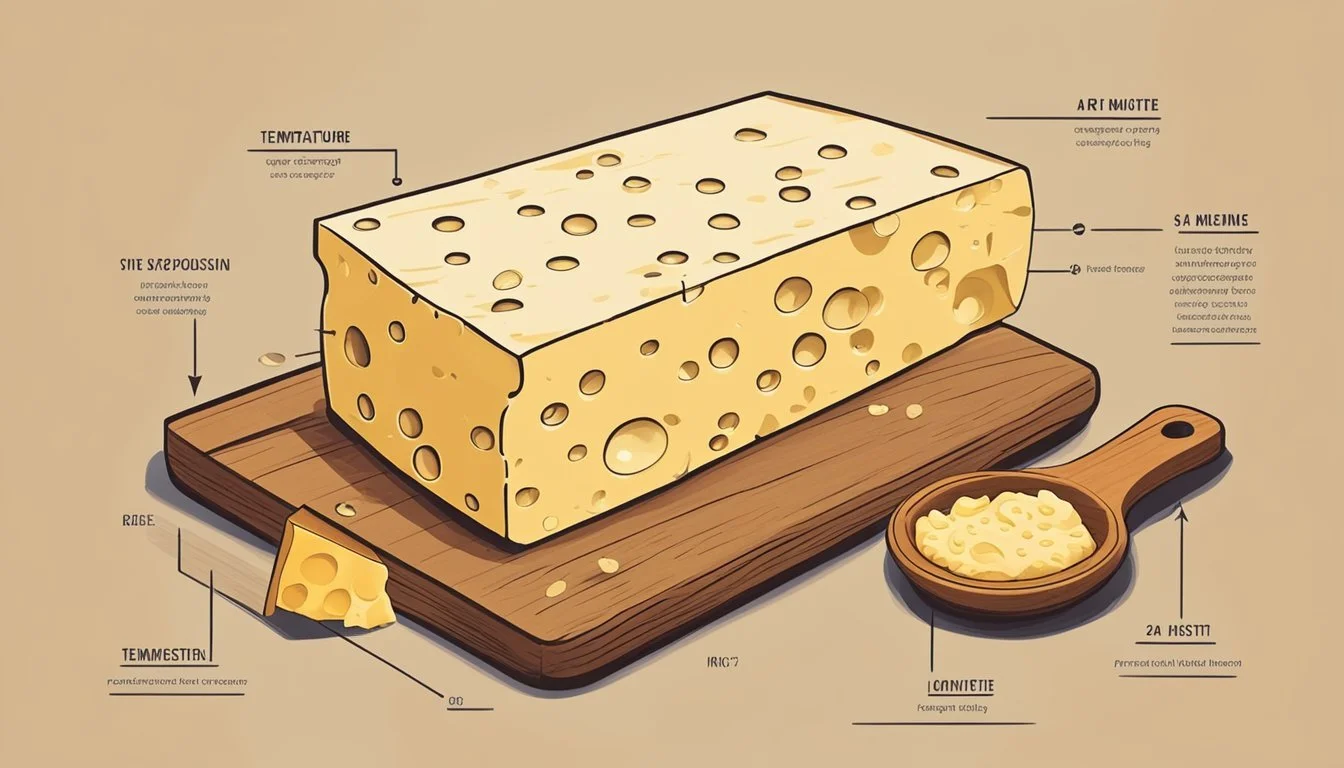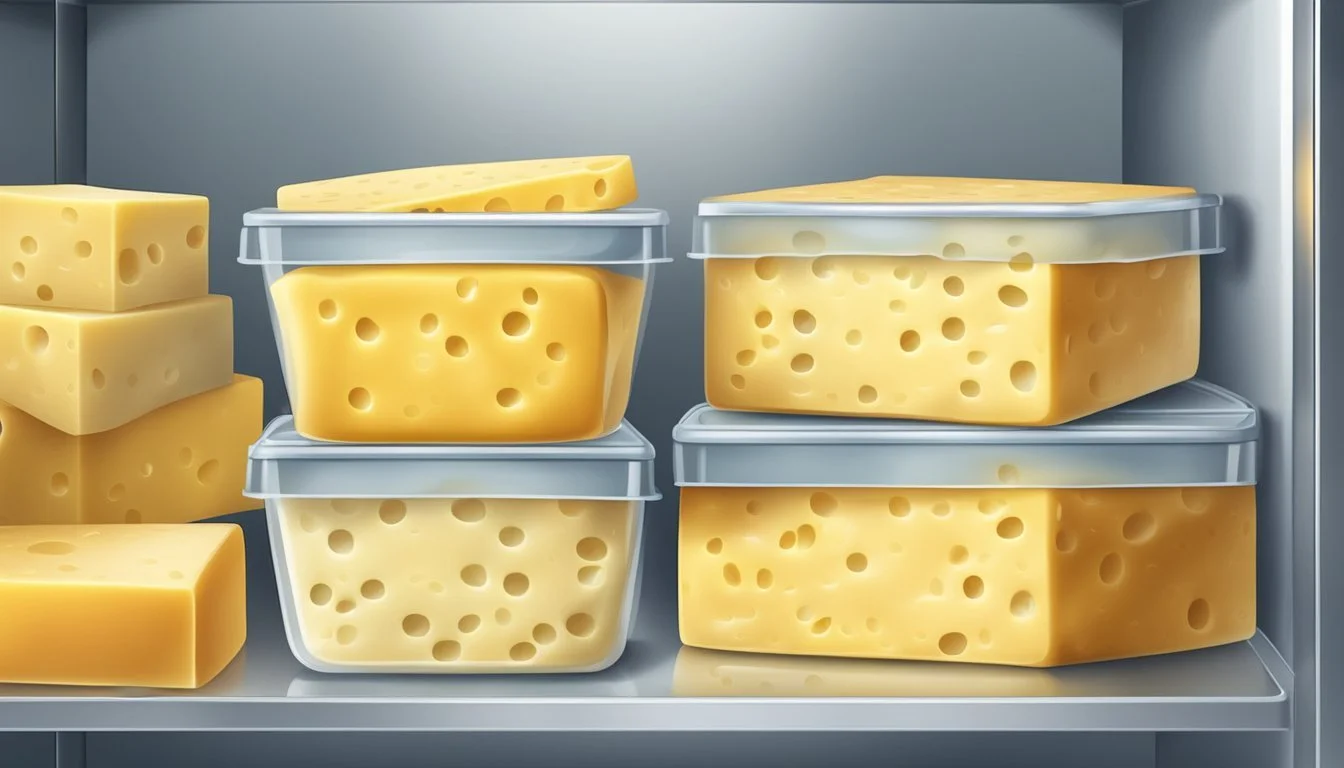Does Hard Cheese Go Bad?
Shelf Life and Storage Tips
Hard cheese, unlike its softer counterparts, boasts a longer shelf life due to its lower moisture content. This dryness makes it difficult for bacteria to grow, effectively extending its lifespan. When stored properly, hard cheese can remain good for several weeks, and even months, past its printed expiration date.
Signs of spoilage in hard cheese include significant changes in texture, an overly bitter or sour taste, or a musty odor. While a pungent aroma is typical of aged cheeses, an unexpected shift in flavor or texture could indicate spoilage. If mold develops, it is generally safe to cut away the affected area and consume the rest.
Proper storage is crucial to maximizing the lifespan of hard cheese. Keeping it wrapped in wax paper, followed by a loose plastic wrap, helps maintain its quality by allowing it to breathe while preventing moisture loss. Refrigeration is essential, and maintaining a consistent cold temperature will help ensure the cheese stays fresh for an extended period.
Understanding Cheese Varieties
Cheese comes in many forms, each with unique characteristics. Understanding the differences between hard and soft cheeses can help in selecting and storing them properly.
Hard vs Soft Cheese
Hard cheeses like Parmesan, Cheddar, and Pecorino are known for their firmness and lower moisture content. This dryness makes them less prone to bacterial growth, allowing them to last longer when stored correctly. They often possess a sharp, intense flavor, which develops as they age.
Soft cheeses such as Brie, Camembert, and Mozzarella have a higher water content and a creamy texture. These cheeses spoil faster due to their moist environment, making proper refrigeration crucial. They are typically milder in flavor compared to hard cheeses.
Cheese Type Texture Moisture Content Shelf Life Hard Cheese Firm, Dry Low Long Soft Cheese Creamy, Soft High Short
Popular Types of Hard Cheeses
Parmesan is a well-aged cheese with a granular texture and bold flavor, commonly grated over dishes.
Cheddar, one of the most popular types, ranges from mild to extra sharp depending on its aging process.
Gouda is slightly sweet and nutty, with a semi-hard texture that becomes more crumbly over time.
Pecorino is a salty, hard cheese made from sheep's milk, often used in Italian cuisine.
Gruyère is known for its slightly sweet, nutty taste, and is often used in baking and fondues.
These hard cheeses are not only diverse in taste but also versatile in culinary applications, making them staples in many kitchens.
Factors Affecting Cheese Longevity
The longevity of cheese is influenced by key factors such as temperature, moisture content, and the presence of bacteria and molds. Understanding these elements can help in extending the shelf life of hard cheese.
Importance of Temperature
Maintaining the correct storage temperature is vital for preserving cheese. Hard cheeses, like cheddar or Parmesan, should be kept at a consistent temperature between 34°F and 38°F (1°C to 3°C).
Fluctuations in temperature can lead to spoilage. For example, warmer temperatures promote bacterial growth, increasing the risk of foodborne illness. Additionally, extreme cold can adversely affect the texture and flavor of the cheese.
Therefore, consistent refrigeration is key to maintaining the quality and safety of hard cheese.
Role of Moisture Content
Moisture content is another critical factor. Hard cheeses typically have lower moisture levels, making them less prone to bacterial growth compared to softer cheeses.
Lower moisture levels inhibit the growth of bacteria and molds, which thrive in damp environments. However, too little moisture can cause the cheese to dry out, affecting its texture and taste.
Proper storage methods, such as wrapping cheese in wax paper and then plastic wrap, can help maintain the appropriate moisture level.
Impact of Bacteria and Molds
Bacteria and molds play a significant role in the aging and spoilage of cheese. The presence of beneficial bacterial cultures is essential for developing the flavor and texture of hard cheese.
However, unwanted bacteria and molds can cause spoilage. Signs of spoilage include uncharacteristic mold growth, sour smells, and off-tastes.
Regularly inspecting cheese for these signs and adhering to proper storage guidelines can help mitigate the risk of spoilage and extend the shelf life of hard cheese.
Indicators of Cheese Quality
Accurately assessing the quality of hard cheese involves examining various factors including aroma, texture, appearance, and flavor profile. Taking note of these indicators can help determine whether the cheese is still good to consume.
Assessing Cheese by Aroma
The aroma of cheese is one of the most immediate and telling indicators of its quality. Fresh, high-quality hard cheese should have a pleasant, often nutty or mildly tangy smell.
A pungent, sour, or musty odor can suggest spoilage. Use your sense of smell to detect any unusual or off-putting scents, as these can indicate that the cheese is no longer safe to eat.
Evaluating Texture and Appearance
Texture and appearance provide essential clues about the state of the cheese. Hard cheese should be firm and consistent throughout. Any slimy or excessively hard spots may signal that the cheese has gone bad.
Visually inspect the cheese for any visible mold that is not part of its natural aging process. Discard cheese exhibiting any unexpected colors.
Understanding Cheese Flavor Profile
Flavor is critical in evaluating cheese quality. Good cheese varieties have distinct, often sharp flavors that intensify with age. Taste a small piece if you’re uncertain about its quality.
A spoilage sign is an overly bitter or sour taste, which is uncharacteristic of even aged hard cheese. Trust your taste buds—if the flavor seems off, it’s best to err on the side of caution and not consume it.
This focused examination of aroma, texture, appearance, and flavor can help you determine the quality and edibility of hard cheese accurately.
Proper Cheese Storage Techniques
Storing hard cheese correctly can significantly extend its shelf life and maintain its quality. Key practices involve using the right wrapping materials and maintaining proper refrigeration.
Optimal Refrigeration Practices
For the best preservation, keep hard cheese at a temperature between 35°F and 45°F (1.6°C and 7.2°C). The refrigerator's vegetable drawer is an ideal spot since it has a consistent humidity level.
Using wax paper or cheese paper wrapped tightly around the cheese helps to keep it moist without allowing excess moisture buildup. A secondary wrapping of foil or parchment paper can help further protect the cheese.
Avoid wrapping cheese directly in plastic wrap, as it can cause the cheese to sweat and spoil prematurely. Instead, use plastic wrap only after the cheese is first wrapped in more breathable material. Storing cheese in tightly closed containers or resealable bags can also help reduce exposure to air and prevent mold growth.
Freezing Cheese for Extended Shelf Life
Freezing can extend the shelf life of hard cheese, although it may slightly alter the texture. To freeze cheese effectively, it should be cut into smaller portions to make thawing easier.
Wrap each portion tightly in plastic wrap and then place it in a freezer-safe resealable bag, removing as much air as possible.
Label the bags with the type of cheese and the date of freezing for easy identification. Use frozen cheese within six months for the best quality.
Thaw cheese in the refrigerator rather than at room temperature to maintain its texture and flavor. Once thawed, it should be used promptly for the best taste and safety.
Identifying Spoiled Cheese
Spotting spoiled cheese involves checking for visible signs like mold and changes in texture, as well as evaluating its smell and taste.
Visible Signs of Spoilage
Mold Growth: While surface mold on hard cheese can sometimes be cut off, extensive mold growth indicates spoilage. Soft cheeses with mold should always be discarded to avoid harmful bacteria.
Texture Changes: A slimy, overly hard, or very dry texture can signal spoilage. Even hard cheeses should not have unexpected texture changes.
Discoloration: Unusual colors such as green, black, or pink spots indicate spoilage and the cheese should not be consumed.
Smell and Taste Indicators
Smell: Spoiled cheese often emits a strong, unpleasant odor. If it smells like ammonia, this is a sign of bacteria overgrowth and potential food poisoning risk.
Taste: Cheese that tastes overly bitter, sour, or has a musty flavor should be discarded. Even connoisseurs will find spoiled cheese unpalatable and unsafe to eat.
Pungency: While some cheeses naturally have a pungent aroma, an off-putting or unusually strong smell can indicate spoilage. These changes signal that harmful bacteria may be present.
Health Considerations
When consuming hard cheese, it’s important to consider both the risk of foodborne illnesses and potential allergen sensitivities. These factors can impact the safety and enjoyment of hard cheese.
Risk of Foodborne Illness
Harmful bacteria can grow on cheese if it is stored improperly or kept for too long. Though hard cheeses are generally less prone to bacterial contamination due to their low moisture content, they are not immune. Listeria, Salmonella, and E. coli are some pathogens that can be found in improperly handled dairy products.
To minimize risks, ensure that cheese is always refrigerated at or below 40°F and wrapped properly to prevent contamination. If the cheese has been kept at room temperature for over two hours, it should be discarded. Visual and textural changes such as mold or unusual smells are indicators that the cheese may no longer be safe to eat.
Allergens and Dairy Sensitivity
Cheese contains lactose, although in smaller amounts in hard cheeses compared to soft cheeses. Even so, individuals who are lactose intolerant may experience discomfort after consuming hard cheese. Dairy allergies can also cause serious symptoms including hives, vomiting, and in severe cases, anaphylaxis.
It's crucial for those with lactose intolerance or dairy allergies to check labels and potentially choose lactose-free or non-dairy alternatives. Consulting with a healthcare provider can provide personalized recommendations and ensure safe consumption of dairy products. Sensitivity to dairy proteins can also trigger the immune system, leading to various allergic reactions, which necessitates caution.
Maximizing Cheese Freshness and Flavor
Prolonging the freshness and enhancing the flavor of cheese involves proper storage methods and culinary uses. Understanding the specific needs of different cheese types is essential for optimal enjoyment.
Guidelines for Fresh Cheese Consumption
Fresh cheeses like cottage cheese, cream cheese, and ricotta are perishable foods that require refrigeration. Store them in the cheese drawer at temperatures between 35°F and 45°F (1.6°C and 7.2°C). Ensure original packaging is tightly sealed to avoid exposure to air and moisture.
For fresh soft cheeses such as fresh mozzarella and feta, storing them in brine can prolong their freshness. Containers should be airtight and kept cool. Always check for best-by or expiration dates and consume them promptly to avoid spoilage.
Using Cheese in Culinary Creations
Incorporating hard and semi-hard cheeses into various dishes can extend their usability. Using shredded or grated hard cheeses, like Parmesan or Swiss, adds flavor to pasta and soups. Integrate semi-soft cheeses like mozzarella in cheesy recipes such as lasagna or pizza.
Serve aged cheeses on a cheese board at room temperature to bring out their flavors. Remove them from the fridge about an hour before serving. Pair with fruits, nuts, and crackers to enhance the tasting experience._
The Science of Cheese Making
Cheese making begins with milk, utilizing its proteins, fats, and enzymes. The process involves specific steps that determine the cheese's texture, flavor, and longevity. In this section, we'll explore the maturation process and the impact of using pasteurized versus raw milk.
Understanding the Cheese Maturation Process
Cheese maturation, also known as affinage, is critical in developing a cheese's flavor and texture. During this aging process, lactose in the milk converts into lactic acid, which reduces moisture and inhibits bacterial growth.
Enzymatic reactions occur, breaking down proteins and fats, contributing to the complex flavors and aromas characteristic of aged cheeses.
Humidity and temperature control are essential. Higher humidity levels favor moldy cheeses like Roquefort, while lower levels suit hard cheeses like Parmesan. Time also plays a role; longer aging generally results in sharper, more intense flavors.
The Role of Pasteurized vs Raw Milk
The type of milk used in cheese making significantly affects the final product. Pasteurized milk undergoes heat treatment to eliminate harmful bacteria, ensuring safety but potentially impacting flavor complexity.
Raw milk retains its natural microflora, which some cheese makers believe adds unique depth and character to the cheese. However, cheese made from raw milk must be aged at least 60 days to reduce the risk of harmful pathogens.
Cheeses from raw milk can offer a more distinctive taste profile, though they come with health risks that need careful management. Pasteurized milk provides consistency and safety, making it popular in commercial cheese production.







